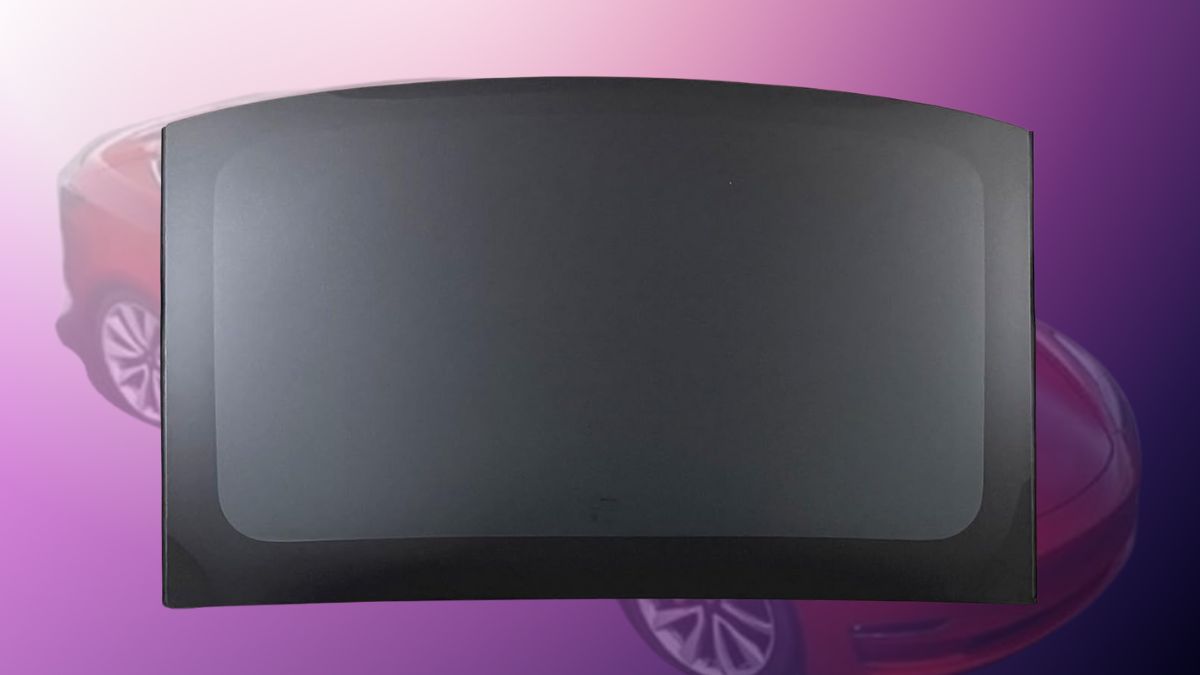A cracked panoramic roof on a Tesla Model 3 isn’t simply a visual nuisance—it’s a risk to the vehicle’s structural integrity, thermal insulation, and long-term comfort. Replacing it is not just about restoring the view.
It’s about maintaining the design Tesla intended, and ensuring that key performance features—like solar rejection and cabin temperature regulation—continue to function properly.
This guide breaks down why a thoughtful replacement choice matters, and how options like K&L or NAGD glass measure up to Tesla’s original equipment, both in performance and price.
The Panoramic Roof Isn’t Just for Looks
The Tesla Model 3’s glass roof is a multifunctional component built into the car’s very structure.
It reinforces safety
The laminated double-pane design isn’t just for tint—it contributes to the vehicle’s rollover resistance and crash energy management. If damaged, the roof could lose its ability to absorb impacts and maintain rigidity.
It controls heat and UV
Tesla’s OEM roof glass blocks 99% of UV rays and reduces infrared heat entry. That’s part of why the cabin stays cooler without cranking up the AC. Replacing that panel with anything less could undo the car’s built-in efficiency.
Why Aftermarket Isn’t Automatically a Downgrade
Tesla’s OEM glass offers exact-match aesthetics and certified structural specs. But the price, often exceeding $1,000 installed, makes alternatives more appealing for post-warranty vehicles.
K&L and NAGD mirror OEM specs
Both use laminated construction and maintain the same 20% VLT tint. K&L (approx. $628 on Amazon) and NAGD (around $725) both block UV, reduce heat, and match the roof curve.
If you’re not under Tesla’s warranty, these options offer near-OEM performance at a lower cost.
Fit and finish matter more than branding
Whether you go OEM or aftermarket, the installation quality is what determines performance. Poor sealing or misalignment—not glass origin—is the more likely cause of leaks or road noise.
Replacing the Roof Glass Isn’t a DIY Weekend Job
You’re not just swapping panels—you’re sealing a structural component that supports cabin integrity and keeps moisture out.
What makes installation tricky:
- The glass weighs ~30 lbs and needs to be aligned precisely.
- Urethane adhesive must be applied with even pressure and cured properly.
- The headliner has to come down, which risks damage if not done carefully.
Professional shops with Tesla experience are strongly recommended, whether you’re using OEM or aftermarket glass.
What Real Owners Prioritize in Replacements
Feedback from Tesla Model 3 owners who’ve had their panoramic roofs replaced reveals what really matters:
- Visual match: Most can’t tell OEM from high-quality aftermarket once installed.
- Thermal comfort: As long as UV/IR protection is equivalent, interior performance remains consistent.
- No leaks or noise: These problems usually trace back to installation, not glass quality.
- Reasonable cost: Most owners report that aftermarket glass, when installed professionally, performs just as well with no regrets.
When to Go OEM—and When to Skip It
OEM glass makes sense if:
- Your car is still under Tesla’s warranty.
- You’re preparing to sell and want to preserve resale optics.
- You’re willing to pay more for perfect spec matching and Tesla branding.
Aftermarket is ideal when:
- The car is out of warranty.
- You’re paying out-of-pocket and want value without cutting corners.
- A trusted installer is experienced with aftermarket panels.
Don’t Skip These Steps Before Buying
Before you click “Buy” on Amazon or eBay:
- Confirm part number compatibility with your specific Model 3 year/trim.
- Verify return and warranty policies (especially for shipped glass).
- Locate an installer familiar with Tesla roofs and the specific brand you’re buying.
- Consider whether your insurance covers glass—many do under comprehensive with a low deductible.
You’ve Replaced the Roof—Now Protect It
The new glass is in. To keep it that way:
- Avoid tailgating to reduce rock strike risks.
- Clean with non-ammonia products to preserve tint.
- Check the seals every few months for leaks or lifting.
- Consider ceramic coating for added UV/IR resistance.
These small steps help extend the lifespan of your new glass and keep your car’s performance in top form.
The Real Cost of Cutting Corners Isn’t Always Obvious
Tesla’s panoramic glass is a structural, thermal, and aesthetic element rolled into one. Replacing it with the wrong product—or installing it incorrectly—can lead to noise, leaks, or worse, a compromised cabin structure. But with the right aftermarket option and a skilled installer, you can save hundreds without losing the performance edge.
Available on Amazon and Walmart, high-quality options like K&L and NAGD make panoramic roof replacement accessible without sacrificing safety or style.
Just don’t underestimate the importance of how it’s installed—because when it comes to Tesla’s glass roof, precision matters more than the label.

Leave a Reply